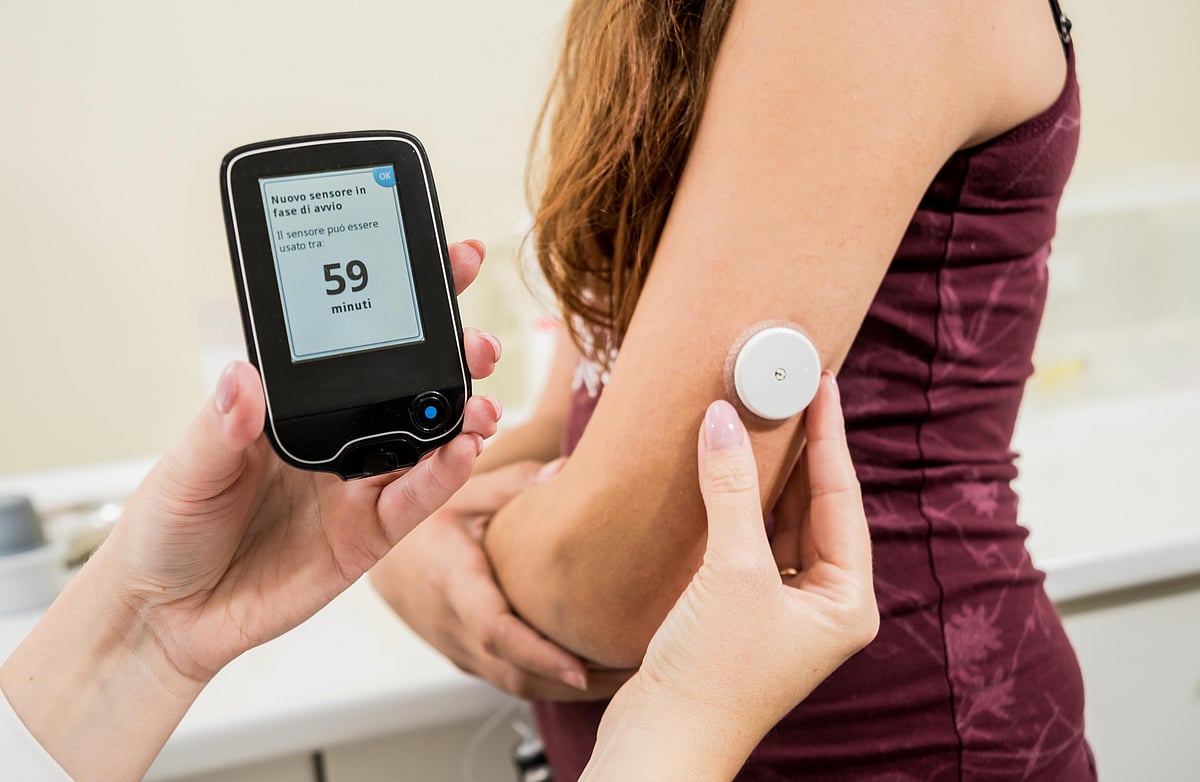Glycated Hemoglobin Lower With Continuous Glucose Monitoring in T1DM

MONDAY, Oct. 17, 2022 (HealthDay News) -- Use of intermittently scanned continuous glucose monitoring with optional alarms for high and low blood glucose levels results in significantly lower glycated hemoglobin levels compared with fingerstick testing among participants with type 1 diabetes and high glycated hemoglobin levels, according to a study published online Oct. 5 in the New England Journal of Medicine.
Lalantha Leelarathna, Ph.D., from Manchester University NHS Foundation Trust in the United Kingdom, and colleagues conducted a multicenter, randomized controlled trial involving participants with type 1 diabetes and glycated hemoglobin levels between 7.5 and 11.0 percent to examine the efficacy of intermittently scanned continuous glucose monitoring versus participant monitoring of blood glucose levels with fingerstick testing. One hundred fifty-six participants were randomly assigned to the intervention or fingerstick testing (78 and 78 participants, respectively).
The researchers found that the mean baseline glycated hemoglobin level was 8.7 ± 0.9 and 8.5 ± 0.8 in the intervention and usual-care groups, respectively, and the levels decreased to 7.9 ± 0.8 and 8.3 ± 0.9 percent, respectively, at 24 weeks (adjusted mean between-group difference, −0.5 percentage points). Compared with the usual-care group, in the intervention group, the time per day that the glucose level was in the target range was 9.0 percentage points higher or 130 minutes longer; furthermore, in the intervention group, time spent in a hypoglycemic state was 3.0 percentage points lower or 43 minutes shorter.
"The benefit with respect to glycated hemoglobin levels was robust in a range of sensitivity analyses, including imputations under plausible missing-at-random and missing-not-at-random assumptions," the authors write.
Several authors disclosed financial ties to the pharmaceutical and medical device industries.
Abstract/Full Text (subscription or payment may be required)
Related Posts
Una agencia de la OMS declara que el aspartamo es un posible carcinógeno
VIERNES, 14 de julio de 2023 (HealthDay News) -- El jueves, una agencia de la...
New York Reports Five Omicron Cases, U.S. Total Rises to Nine
FRIDAY, Dec. 3, 2021 (HealthDay News) -- Five cases of the omicron coronavirus...
Experimental Pill May Fight Antibiotic-Resistant UTIs
THURSDAY, April 7, 2022 (HealthDay News) -- Urinary tract infections are common...
